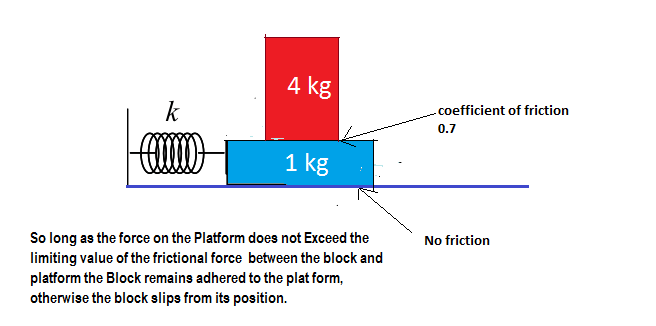Question #00366
1 Answer

Let
Given
Now if force F produces x elongation or displacement from equlibrium position due to exoansiin or compression of spring then
If the restoring acceleration is f when F force is acting then
Again we know that
Comparing (1) and (2) we get
Now plugging
we get
a) The force constant k = 197.4N/m
b)The maximum force acting when a=0.1 and n= 1Hz
The periodic force acting on the oscillatling object (platform alonng with the block on it) is maximum when displacement from equlibrium position is maximum i.e.dislplacement becomes equal to the amplitude (a) of oscillation.
Now it is also given that the coefficient of static friction between the block and platform is
The maximum force of static friction on the block is the product of coefficient of friction and normal reaction i.e.weigt of the block.
So this limiting maximum frictional force
Again the maximum force on oscillating object at its extreme position increases with increase of its amplitude.
And the maximum force acting on the object should not exceed the limiting value of friction (27.44N) to continue oscillatory motion of the platform without slipping of the block on the platform.
If this occurs for amplitude =A then maximum force at extreme position of platform wil be = kA
So
c)Maximum amplitude of oscillation

